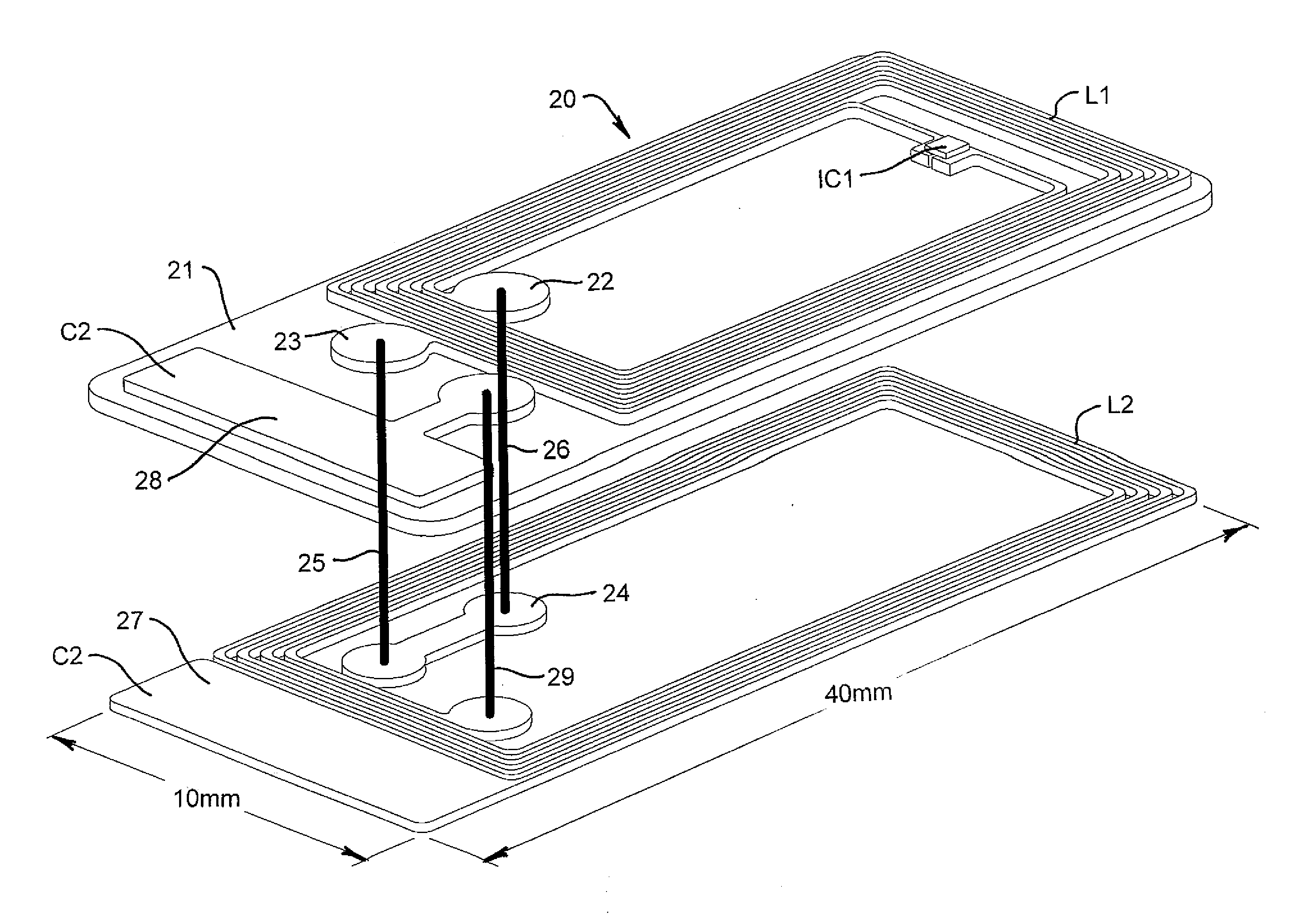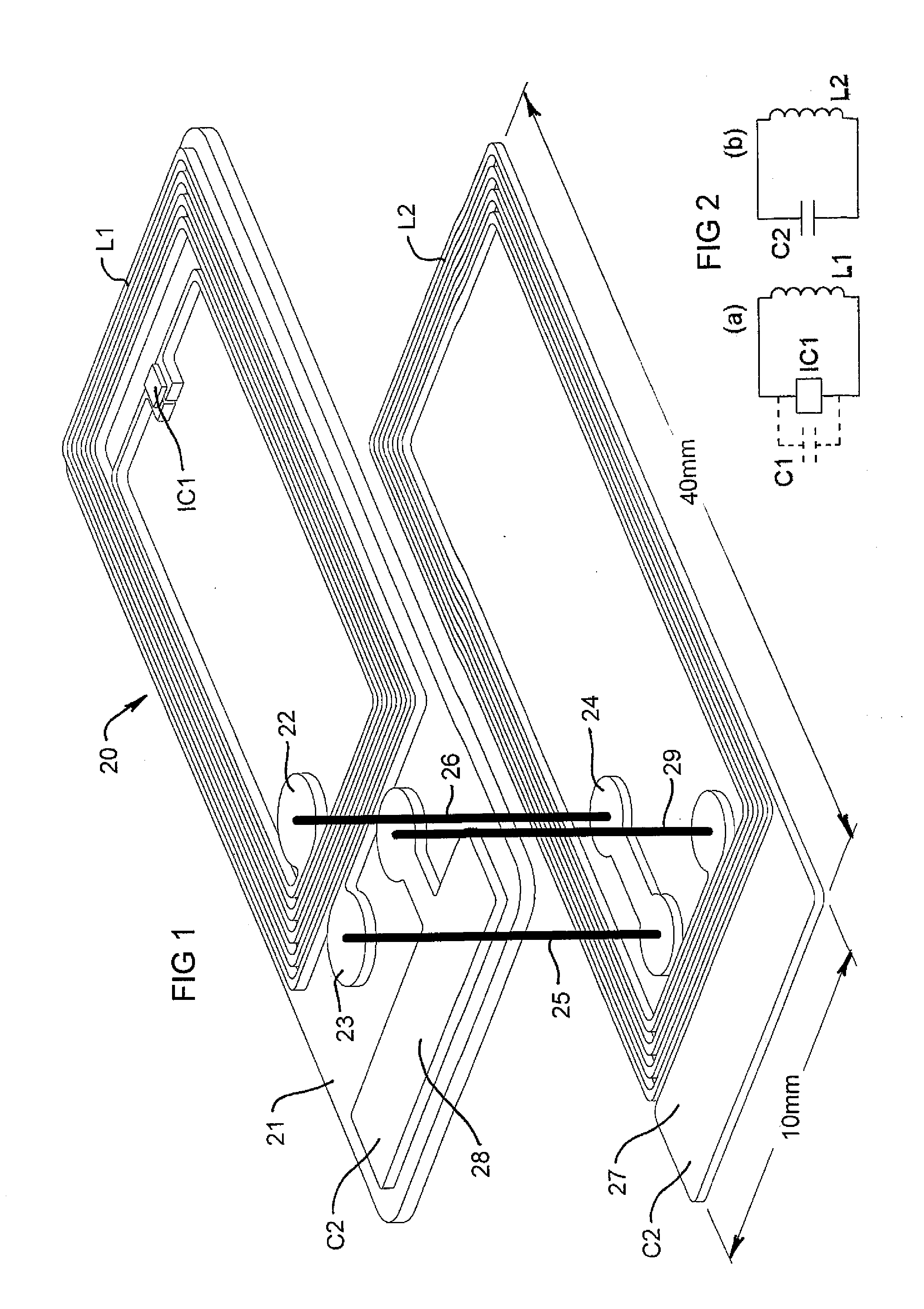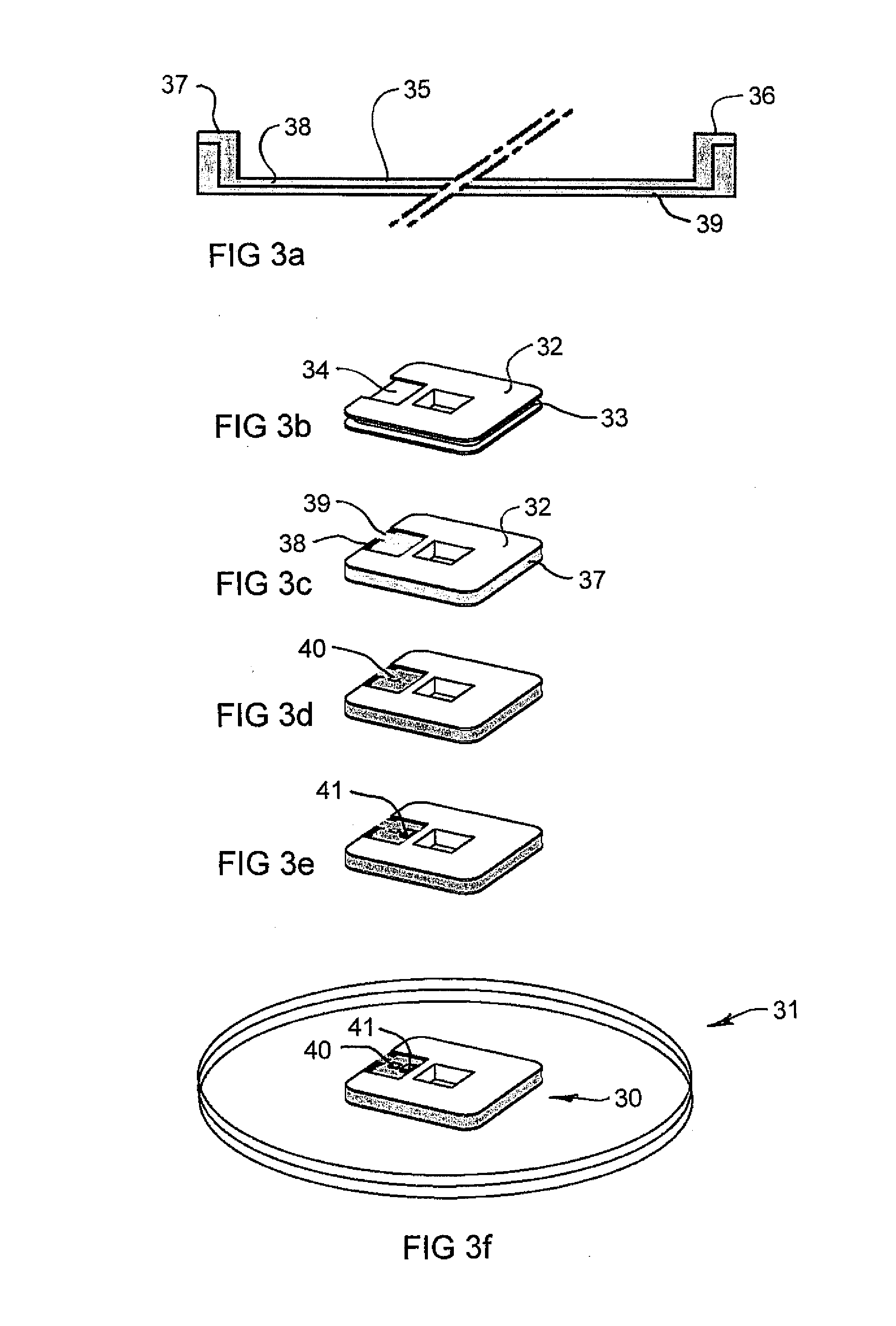RFID Tag Containing Two Tuned Circuits
- Summary
- Abstract
- Description
- Claims
- Application Information
AI Technical Summary
Benefits of technology
Problems solved by technology
Method used
Image
Examples
Embodiment Construction
[0029]A preferred embodiment of the present invention will now be described with reference to the accompanying drawings wherein:
[0030]FIG. 1(a) shows a circuit diagram of a first tuned circuit including a chip associated with a tag according to the present invention;
[0031]FIG. 1(b) shows a circuit diagram of a second tuned circuit associated with the tag;
[0032]FIG. 2 shows an exploded view of a tag according to one embodiment of the present invention;
[0033]FIGS. 3(a) to 3(f) show components associated with a tag according to a further embodiment of the present invention.
[0034]FIG. 4 shows the signals from a stack of conventional tags; and
[0035]FIG. 5 shows the signals from a stack of tags according to the present invention.
[0036]FIG. 1(a) shows a first circuit including an inductor L1 and an integrated circuit chip IC1 which contains data and / or identity information together with circuitry for support functions such as reply generation and power supply. Chip IC1 includes an on board...
PUM
 Login to View More
Login to View More Abstract
Description
Claims
Application Information
 Login to View More
Login to View More - R&D
- Intellectual Property
- Life Sciences
- Materials
- Tech Scout
- Unparalleled Data Quality
- Higher Quality Content
- 60% Fewer Hallucinations
Browse by: Latest US Patents, China's latest patents, Technical Efficacy Thesaurus, Application Domain, Technology Topic, Popular Technical Reports.
© 2025 PatSnap. All rights reserved.Legal|Privacy policy|Modern Slavery Act Transparency Statement|Sitemap|About US| Contact US: help@patsnap.com



